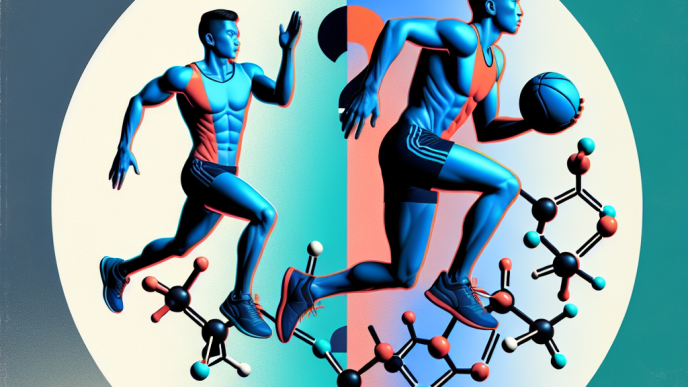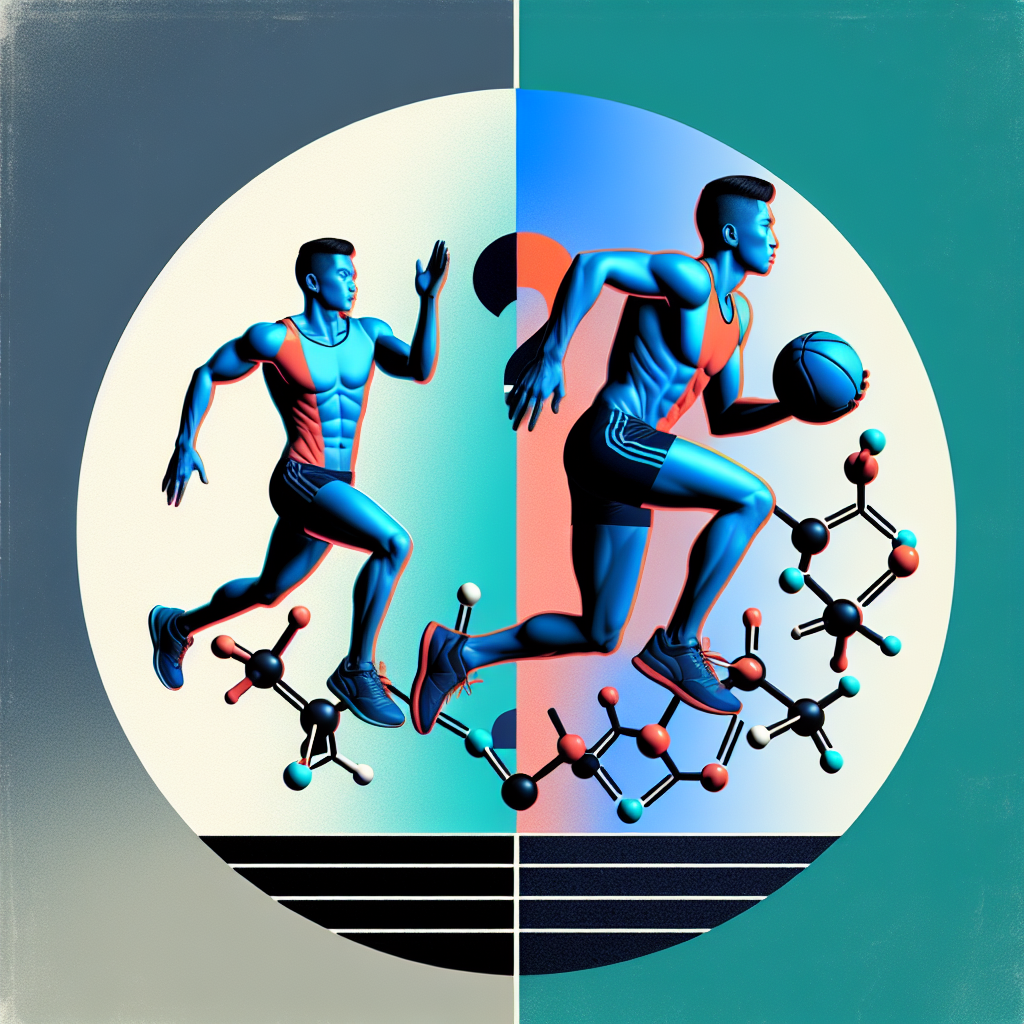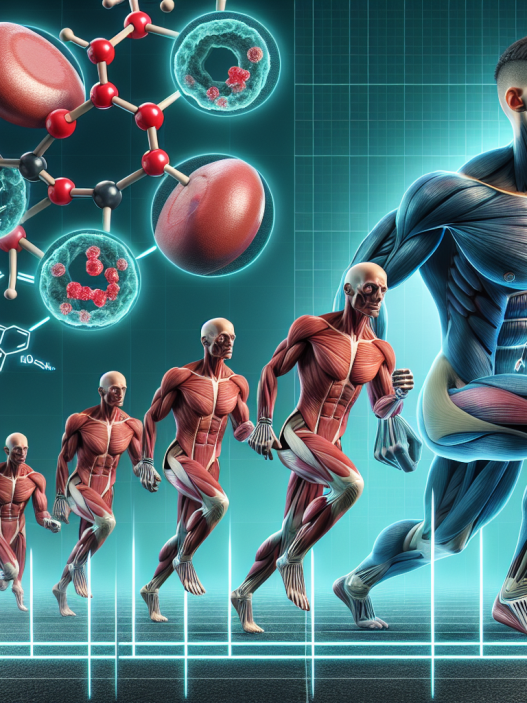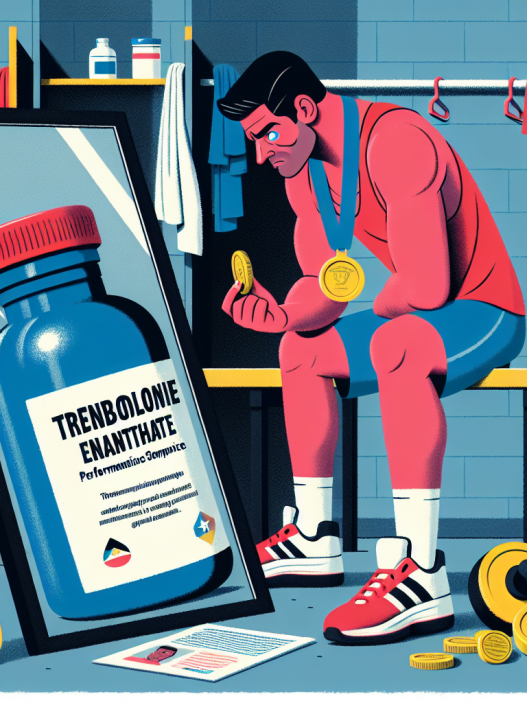-
Table of Contents
- Testosterone Undecanoate and Sports Performance: Myth or Reality?
- The Pharmacokinetics of Testosterone Undecanoate
- The Pharmacodynamics of Testosterone Undecanoate
- Evidence for the Use of Testosterone Undecanoate in Sports Performance
- The Controversy Surrounding Testosterone Undecanoate in Sports
- The Role of Testosterone Undecanoate in Injury Recovery
- Conclusion
- Expert Comments
Testosterone Undecanoate and Sports Performance: Myth or Reality?
Testosterone is a hormone that plays a crucial role in the development and maintenance of male characteristics, including muscle mass, strength, and bone density. It is also known to have an impact on athletic performance, leading to the widespread use of testosterone and its derivatives in the sports world. One such derivative is testosterone undecanoate, a long-acting injectable form of testosterone. But does it really enhance sports performance, or is it just a myth? In this article, we will explore the pharmacokinetics and pharmacodynamics of testosterone undecanoate and examine the evidence surrounding its use in sports performance.
The Pharmacokinetics of Testosterone Undecanoate
Testosterone undecanoate is a prodrug, meaning it is converted into its active form, testosterone, in the body. It is administered via intramuscular injection and has a long half-life of approximately 33 days (Nieschlag et al. 2010). This means that it remains in the body for an extended period, providing a sustained release of testosterone. This is in contrast to other forms of testosterone, such as testosterone cypionate or enanthate, which have shorter half-lives and require more frequent injections.
After injection, testosterone undecanoate is slowly absorbed into the bloodstream and then converted into testosterone by enzymes in the liver. From there, it enters the systemic circulation and exerts its effects on various tissues, including muscle and bone. The slow release of testosterone from testosterone undecanoate allows for a more stable and consistent level of testosterone in the body, which may have advantages in terms of sports performance.
The Pharmacodynamics of Testosterone Undecanoate
The primary mechanism of action of testosterone undecanoate is through its conversion into testosterone. Testosterone is a potent androgen, meaning it has masculinizing effects on the body. It binds to androgen receptors in various tissues, including muscle and bone, leading to an increase in protein synthesis and muscle mass (Bhasin et al. 2001). It also has an impact on bone density, red blood cell production, and mood and cognitive function.
In the context of sports performance, the effects of testosterone undecanoate are of particular interest. It is believed that the increase in muscle mass and strength from testosterone supplementation can lead to improved athletic performance, especially in activities that require strength and power, such as weightlifting and sprinting. Additionally, testosterone has been shown to have a positive impact on recovery and injury prevention, which can also benefit athletes (Bhasin et al. 2001).
Evidence for the Use of Testosterone Undecanoate in Sports Performance
Despite the potential benefits of testosterone undecanoate in sports performance, there is limited research on its use in this context. Most studies have focused on the use of testosterone undecanoate for medical purposes, such as treating hypogonadism (low testosterone levels) in men. However, some studies have examined its effects on athletic performance.
In a study by Bhasin et al. (2001), 61 healthy men were given either testosterone undecanoate or a placebo for 20 weeks. The results showed that the group receiving testosterone undecanoate had a significant increase in muscle mass and strength compared to the placebo group. However, this study did not specifically look at the effects of testosterone undecanoate on athletic performance.
Another study by Saad et al. (2007) looked at the effects of testosterone undecanoate on body composition and athletic performance in 24 men. The results showed that the group receiving testosterone undecanoate had a significant increase in lean body mass and a decrease in fat mass compared to the placebo group. However, there was no significant difference in athletic performance between the two groups.
While these studies show some potential benefits of testosterone undecanoate in terms of muscle mass and body composition, they do not provide conclusive evidence for its use in sports performance. More research is needed to fully understand the effects of testosterone undecanoate on athletic performance.
The Controversy Surrounding Testosterone Undecanoate in Sports
Despite the lack of conclusive evidence, testosterone undecanoate has been a subject of controversy in the sports world. It is on the World Anti-Doping Agency’s (WADA) list of prohibited substances, and its use is banned in most sports organizations. This is due to its potential to enhance athletic performance and its potential for abuse by athletes seeking an unfair advantage.
One example of the controversy surrounding testosterone undecanoate is the case of Jon Jones, a professional mixed martial artist. In 2016, Jones tested positive for the presence of testosterone metabolites in his system, which he claimed was due to the use of a contaminated sexual enhancement pill. However, he was still suspended from competition for one year and had his title stripped due to the use of a banned substance (UFC Anti-Doping Policy, 2016).
While there is no denying the potential benefits of testosterone undecanoate in terms of muscle mass and strength, its use in sports performance remains a contentious issue. The lack of conclusive evidence and the potential for abuse make it a controversial topic in the sports world.
The Role of Testosterone Undecanoate in Injury Recovery
Aside from its potential effects on athletic performance, testosterone undecanoate may also play a role in injury recovery. Testosterone has been shown to have anti-inflammatory properties, which can aid in the healing process of injuries (Bhasin et al. 2001). Additionally, the increase in muscle mass and strength from testosterone supplementation can help prevent injuries in the first place.
One real-world example of the use of testosterone undecanoate in injury recovery is the case of NFL player Peyton Manning. In 2011, Manning underwent multiple neck surgeries and was facing the possibility of never playing football again. However, he received testosterone replacement therapy, including testosterone undecanoate, which helped him recover and return to the field (ESPN, 2012).
Conclusion
In conclusion, testosterone undecanoate is a long-acting injectable form of testosterone that has potential benefits in terms of muscle mass, strength, and injury recovery. However, there is limited research on its use in sports performance, and its use is banned in most sports organizations due to its potential for abuse. While it may have a place in medical treatment, more research is needed to fully understand its effects on athletic performance. As with any performance-enhancing substance, the use of testosterone undecanoate should be carefully considered and monitored by a healthcare professional.
Expert Comments
“The use of testosterone undecanoate in sports performance remains a controversial topic, with limited research to support its use. While it may have potential benefits, its use should be carefully monitored and regulated to prevent abuse and

















